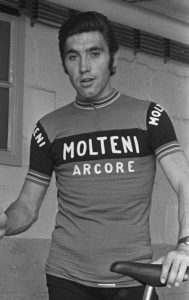I had the pleasure of giving a talk at UCSF last week. The talk was part of the “Cycling to Health” series, which is one of the UCSF Osher Mini Medical School programs offered to the general public.
The talk was videotaped and will be uploaded on the UCTV network in a few months, but I thought I would summarize here for you the main points that I addressed.
In the first part of the talk, I described the normal cardiac adaptions to high intensity cycling, and I made some comments to distinguish cycling from other sports and other endurance sports.
Cycling is considered a sport with high dynamic as well as high static stress. This causes the cardiovascular system of cyclists to adapt in some major ways. In fact, there is some data to show that cyclists have the biggest hearts among all athletes!
Besides having larger hearts, cyclists (as well as most well trained athletes) typically have a slow pulse rate, and may have other changes in the configuration of their electrocardiograms.
I also discussed the influence of body size, sex, and ethnicity on the normal adaptive changes on can expect to see among well trained cyclists and athletes.
Next, I touched on the question of screening cyclists for occult heart disease, and I described the challenges in doing so. One must be careful not to confuse an appropriate enlargement of the heart with an enlargement that could be due to some underlying abnormal condition.
Another very important challenge is that even if we detect a true abnormality, we are not always able to predict the course that this abnormality will take.
The most impressive historical example is that of Eddy Merckx, probably one of the greatest road cyclists of all times.
Merckx won five Tours de France, five Tours of Italy, and numerous other trophies. Yet he and his doctors knew full well that he had a potentially very dangerous form of congenital heart disease called hypertrophic cardiomyopathy. His electrocardiogram was known to be markedly abnormal and the team cardiologist was aware that he had this potentially fatal condition. Furthermore, many of his close relatives, including his father, had died of sudden cardiac death.
There is no doubt in anyone’s mind that if someone with Merckx’s condition were tested today, he or she would be disqualified from all competitive sports because of the high perceived risk of sudden cardiac death. Yet, Mercks is still with us today, with his heart still ticking at age 72!
In the last part of my talk, I covered the recent research that raises some concerns about the detrimental effects of endurance sports on the heart. I tried to place this information in context, because the data is somewhat still conflicting as to what veteran athletes should be concerned about. I also briefly shared with the audience my personal take on the problem, and also addressed the problem of atrial fibrillation which is unfortunately fairly common among male veteran athletes.
I encourage all cyclists to attend the lecture series if you can. It is very informative regarding all aspects of the cyclist’s health, and the speakers are top notch.
I will provide a link to my talk when it is uploaded in a few months but, in the meantime, you can download my slide deck here.
Of course, if you have any questions or concerns regarding heart health (whether you’re a cyclist or an athlete or not!), feel free to call us and schedule a time to chat. I am always happy to answer questions over the phone and help guide you in any decision you need to make.
–Dr. Accad
UPDATE: The talk is now available on YouTube here.
Discover Our Unique Cardiovascular Health Services!


Thanks for sharing. These are all great ideas!!